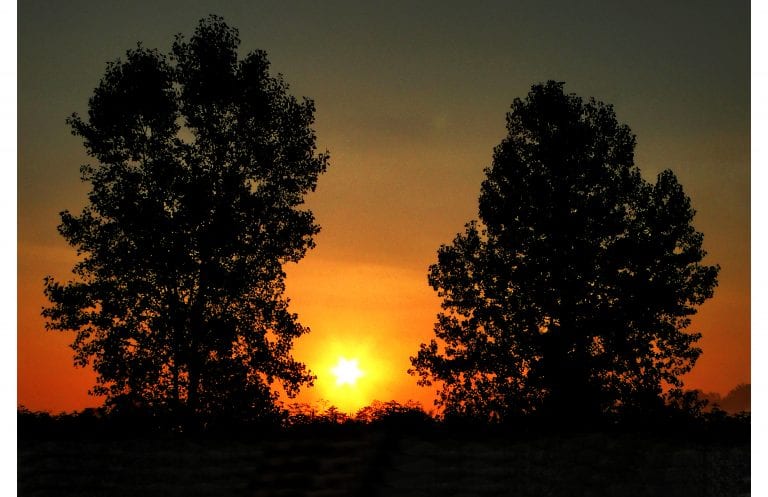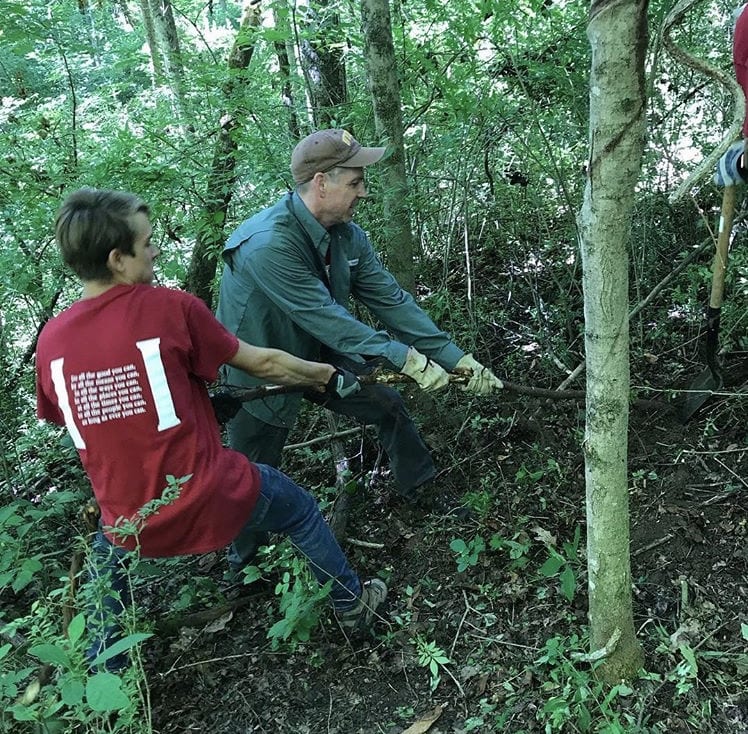Chapter 7: Case Study: Wilderness and Creation Spirituality
7.3 Values of Nature in Religious Wilderness Traditions
In addition to how clearly biblical traditions rely on wilderness themes and influences, and how these can be translated into environmental lessons, it is easy to see how these religious traditions highlight some of the values of nature outlined by Stephen Kellert that we discussed in chapter three.
Kellert’s “utilitarian” value highlights the practical and material sustenance and security that comes from nature, and many of the “God provides” examples of biblical sources provide ready examples, like the provision of water, manna, and quail in the wilderness. The “naturalistic” value, which highlights experiential benefits of curiosity, discovery, and recreation in nature, is evoked in many of the psalms that marvel at all the details of nature. The “ecologistic-scientific” value, which entails systematic study of nature to gain knowledge and understanding, seems exemplified by the natural history knowledge of Solomon or by the traditions of monastic contributions to science, such as Gregor Mendel’s disciplined discoveries in genetics or mystically-inspired scientists like George Washington Carver.
The “aesthetic” value arises from the full understanding of beauty leading to inspiration, harmony, and security; this also finds expression in many psalms extolling the beauty of creation and how all things work together through God’s provision (Psalm 104 particularly highlights this, and is sometimes referred to as the ecological psalm). The “symbolic” value is the use of nature for language and thought, which contributes to communication and mental development; here I would note that religions regularly draw on symbolism and metaphor related to nature, such as Jesus’s many agrarian parables within Christianity [1] or metaphors for God like “rock” or “lamb” or the many symbolic representations of divine spirit or wisdom in nature in Native American traditions. [2]

The “humanistic” value describes strong emotional attachments and love of nature, and encourages cooperation, bonding, companionship and sharing – these are certainly functions that emerged from the biblical exodus wilderness experience (which Bratton typifies for its community-building character), and biblically-based wilderness programs depend on this aspect to develop an environmental ethic in participants. The “moralistic” value entails spiritual reverence and ethical concern for nature (evoking meaning, kinship, and altruism), and this too is a mainstay of biblical outdoor environmental programs. [3]

The “dominionistic” value, which entails mastery, physical control, and dominance of nature, sounds like a tricky value for environmentalism, but its function is producing mechanical skills, physical prowess and ability to subdue (or survive) nature, and no doubt the woods-skills and craftsmanship aspects of many outdoor programs draw on this value to some extent (while tempering any over-weaning sense of mastery of nature on the whole). Finally, the “negativistic” value involves fear, aversion, and alienation from nature in the sense of recognizing the power and danger inherent in wild nature, which tends to parallel the power sensed in the divine; [4] the security, protection, safety and awe that Kellert says are the functions of this value are the same sort that might emerge from one’s sense of the power and sovereignty of God.
While the associations named above are mainly suggestive, they point toward the sort of potential that religions have (and already make use of) to connect powerful values related to the creation with enduring religious symbols, traditions, and teachings. No doubt, thousands of religious camps in America make use of a wide range of these values, and the growing Jewish outdoor experiential education community has documented the related values and impacts of their programs in the JOFEE report (Jewish Outdoor Food, Farming, and Environmental Education) produced by the Jewish environmental organization Hazon.
This chapter has focused mainly on biblical traditions, and surely multiple chapters could cover additional examples from a wide range of religious traditions around the world. Yet in America, there are also powerful past examples of how values of nature have undergirded the protection of nature through religious resonance.
- A textual content analysis of the four gospels of the Christian New Testament found over 1,000 references to nature (Faber, D.A. (1972) A Content Analysis of the Four Gospels in Relation to Jesus' Use of the Outdoors. Master of Education Thesis, Pennsylvania State University). Other examples of nature references in the bible are noted here: https://www.biblestudytools.com/topical-verses/bible-verses-about-nature/ and here: https://www.christiantoday.com/article/10-bible-verses-on-the-glory-of-god-in-creation/89071.htm ; (the Green Bible also has a “nature trail” through the Bible) ↵
- For example: http://www.native-languages.org/nature-spirits.htm ↵
- The moralistic value is also a basis for what Ursula Goodenough calls religious naturalism. ↵
- Romans 1:18 indicates that God’s power and divine nature can be seen in the creation, and Elijah’s famous encounter with God in I Kings 19:12 pictures the divine presence in the stillness (and in that case not in the wind, or earthquake, or fire); Jeremiah 5:22 also displays Kellert’s negativistic value. ↵
